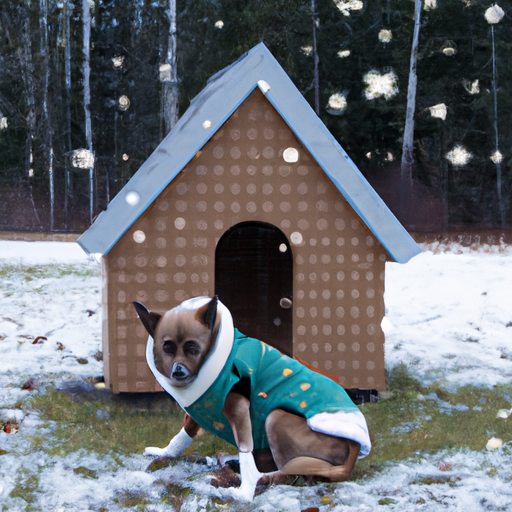Winter can be a challenging time for our furry friends, especially those who live outdoors. As a caregiver, it’s your responsibility to ensure that your outside dogs are comfortable and warm during the coldest months of the year. Here are five key strategies to help you achieve this.
1. Providing Adequate Shelter
Proper shelter is the first line of defense against the cold. Your dog’s house should be sturdy, waterproof, and insulated. The interior should be spacious enough for your dog to move around, but small enough to hold in body heat.
- Use straw or cedar shavings for bedding, as they are excellent insulators and repel fleas.
- The door should face away from prevailing winds.
- Elevate the house off the ground to prevent moisture seepage and cold transfer.
| Shelter Feature | Importance |
|---|---|
| Insulation | Preserves body heat |
| Size | Allows movement yet retains heat |
| Elevation | Prevents moisture and cold transfer |
2. Dressing Your Dog for the Weather
Not all dogs have fur that’s meant for harsh winters. For these breeds, consider investing in winter dog clothes.
- A waterproof and insulated dog coat can provide an extra layer of warmth.
- Dog boots can protect their paws from ice, snow, and salt.
Remember, the fit should be snug but not too tight.
3. Regular Exercise
Even in winter, your dog needs regular exercise to maintain body warmth.
- Schedule play sessions during the warmest parts of the day.
- Monitor your dog to ensure they’re not showing signs of hypothermia or frostbite.
4. Healthy Diet and Hydration
Food is fuel, and fuel generates heat.
- Increase your dog’s food intake during winter, especially protein.
- Ensure fresh, unfrozen water is always available.
5. Using Heating Devices
Consider using safe, pet-approved heating devices.
- Heated pet mats or beds.
- Heated water bowls.
- A dog house heater or heat lamp.
Always monitor the use of these devices to prevent accidents.
FAQ Section
Q1: Can all dog breeds withstand cold weather?
No, some breeds are more susceptible to the cold than others. Always monitor your dog for signs of discomfort.
Q2: How can I tell if my dog is too cold?
Shivering, lethargy, and whining are signs your dog may be too cold.
Q3: Can I leave my dog outside all winter?
It’s not recommended, especially during extreme weather conditions. Regular checks and adjustments can ensure their comfort and safety.
Q4: What should I avoid when using heating devices?
Avoid using devices that are not pet-approved to prevent burns or fire hazards. Always monitor your dog when using these devices.
Remember, winter doesn’t have to be a frosty ordeal for your outside dog. A little preparation, monitoring, and plenty of love can ensure they stay warm and safe during the cold months.



